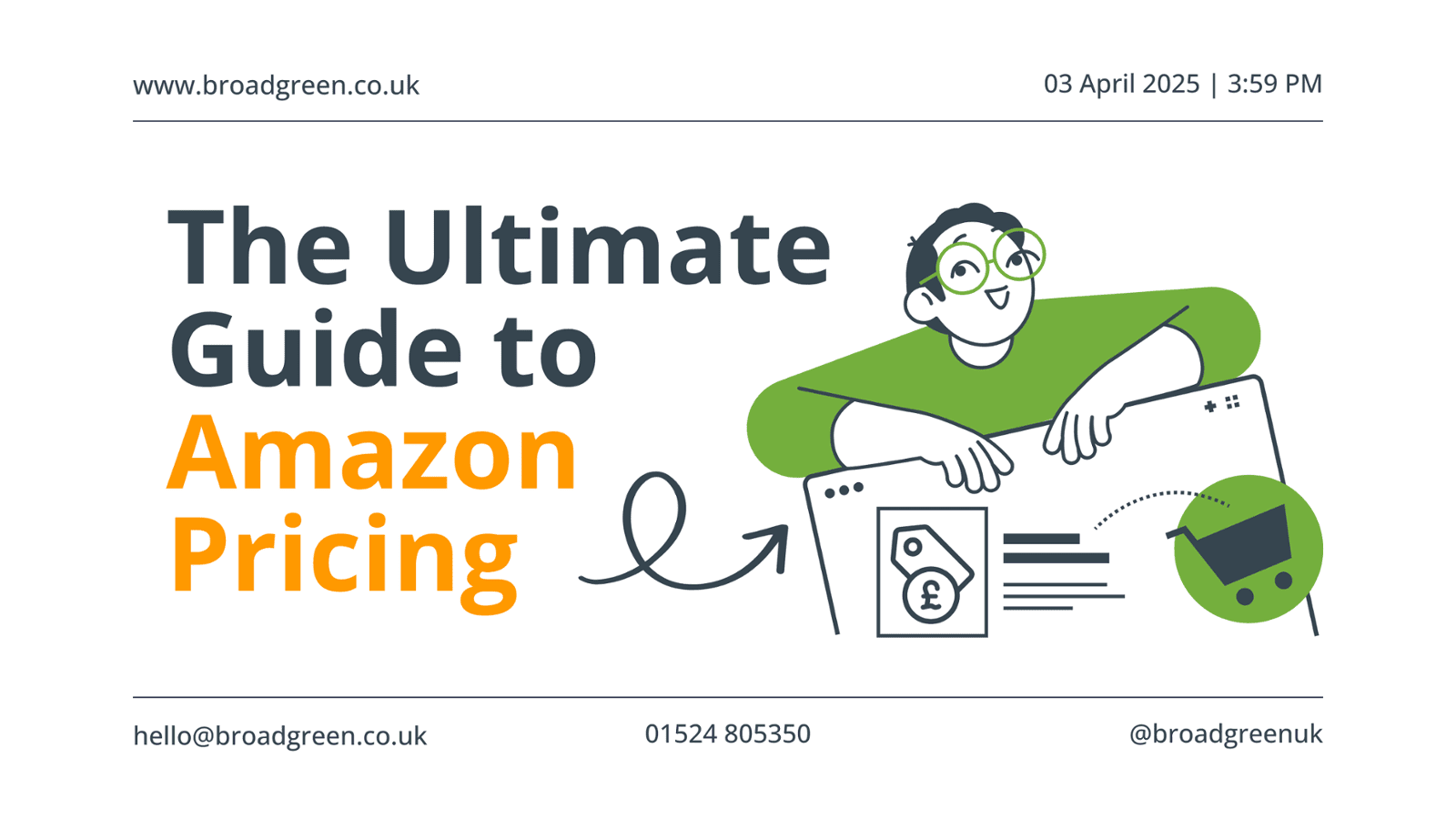
Are You Leaving Money on the Table with Your Amazon Pricing Strategy?
Are You Leaving Money on the Table with Your Amazon Pricing Strategy?
Did you know that a 1% improvement in price optimization can lead to an 11.1% increase in profitability? Yet many Amazon sellers are flying blind, using outdated pricing strategies that leave thousands of pounds on the table every month.
Whether you're just starting out or managing multiple SKUs, mastering the art and science of Amazon pricing could be the difference between struggling to break even and building a thriving, profitable business.
Why Most Amazon Sellers Get Pricing Wrong (And How You Can Get It Right)
Why Most Amazon Sellers Get Pricing Wrong (And How You Can Get It Right)
Picture this: You've sourced an amazing product, created eye-catching listings, and launched with excitement—only to watch your sales trickle in while competitors dominate the market. Sound familiar?
The truth is, Amazon's marketplace is a complex ecosystem where pricing isn't just about being the cheapest option. It's about striking the perfect balance between visibility, conversion, and profitability.
In this comprehensive guide, we'll reveal the proven pricing strategies used by 7-figure Amazon sellers to maximize their profits while staying competitive in even the most cutthroat categories.
The Amazon Pricing Ecosystem: What You Need to Know
The Amazon Pricing Ecosystem: What You Need to Know
Amazon's marketplace operates unlike any other retail environment, with several unique factors influencing pricing success:
The Invisible Hand: Amazon's Algorithm
The A9 algorithm doesn't just consider price—it evaluates the complete value proposition of your listing. While competitive pricing helps win the Buy Box, Amazon also weighs:
- Seller performance metrics (order defect rate, late shipment rate, cancellation rate)
- Fulfillment method (FBA listings get a significant boost
- Customer feedback and review
- In-stock consistency
- Listing quality and completeness
This means you can often command higher prices than competitors if you excel in these other areas.
The True Cost of Selling on Amazon
Before setting prices, smart sellers calculate their complete cost structure:
- Product costs (unit cost, shipping to Amazon, customs/duties)
- Amazon fees (referral fees ranging from 8-45% depending on category)
- FBA fees (fulfillment, storage, long-term storage penalties)
- PPC advertising (typically 10-30% of revenue for competitive categories)
- Returns and damaged inventory (category-dependent, but often 2-5%)
- Fixed business costs (software tools, employee costs, etc.)
Understanding your true break-even point is essential for preventing accidental losses and establishing your minimum viable price.
5 Pricing Models That Can Transform Your Amazon Business
Let's explore each pricing strategy with real-world examples and actionable implementation steps:
1. Cost-Plus Pricing: The Foundation of Profitability
How it works: Calculate all costs associated with your product and add a predetermined markup.
Formula: (Product Cost + Amazon Fees + Shipping + Overhead) ÷ (1 - Desired Profit Margin) = Selling Price
Real-world example: If your product costs£10, Amazon fees are £3, and you want a 30% profit margin:
(£10 + £3) ÷ (1 - 0.3) = £13 ÷ 0.7 = £18.57
Best for: Private label products with unique features and limited direct competition.
Pro tip: Don't just consider current costs—factor in potential fee increases and cost fluctuations to future-proof your pricing.
2. Competitive Pricing: Winning the Buy Box Game
How it works: Set prices based on your competitors' pricing, typically matching or slightly undercutting top competitors.
Implementation steps:
- Identify your top 5 competitors for each product
- Track their pricing over a 30-day period to identify patterns
- Determine your competitive position (lowest price, middle of the pack, or premium)
- Use automated repricing tools to maintain your position
Best for: Resellers of popular brands and commoditized products.
Case study: A laptop accessories seller increased their Buy Box percentage from 27% to 73% by implementing dynamic competitive pricing, resulting in a 43% sales increase despite a smaller profit margin.
3. Value-Based Pricing:Commanding Premium Prices
How it works: Set prices based on the perceived value to customers rather than your costs.
Implementation steps:
- Identify your unique value propositions (faster shipping, better quality, exclusive features)
- Emphasize these benefits in your listing (title, bullets, enhanced brand content)
- Support premium positioning with high-quality images and video content
- Gather and showcase positive customer reviews and testimonials
Best for: Innovative products, premium brands, and items with demonstrable quality advantages.
Pro tip: Use A+ Content and storefront features to build brand perception that justifies higher price points.
How it works: Leverage consumer psychology to influence purchasing decisions through strategic price presentation.
Techniques to implement:
- Charm pricing: Use prices ending in .99 or .97 (studies show these convert better than round numbers)
- Price anchoring: Show a higher "list price" or "compare at" price alongside your offer
- Decoy pricing: Offer good-better-best options to make your target option seem more attractive
- Bundle pricing: Create kits or sets that increase perceived value while boosting average order value
How it works: Continuously adjust prices based on competition, demand, seasonality, and inventory levels.
Implementation steps:
- Identify key market triggers (competitor price changes, inventory levels, time to restock)
- Set rules for automatic price adjustments within predefined parameters
- Implement automated repricing software with custom rules
- Establish price floors to protect profitability
Best for: High-volume sellers with multiple SKUs and competitive categories.
Competitive Analysis: Your Secret Weapon for Pricing Domination
Competitive Analysis: Your Secret Weapon for Pricing Domination
The most successful Amazon sellers don't price in a vacuum—they understand their competitive landscape inside and out.
- Identify All Competitor Types:
- Direct competitors (identical products)
- Indirect competitors (similar products/substitutes)
- Private label competitors vs. authorized resellers
- Track Key Metrics Across Competitors:
- Price history (using tools like Keepa and CamelCamelCamel)
- Buy Box win rate
- Review quantity and quality
- Fulfillment method
- Stock levels and availability
- Analyze Listing Quality Differences:
- Image quality and quantity
- Title and bullet point optimization
- Enhanced brand content
- Number of answered questions
- Search ranking for key terms
- Monitor Competitor Promotional Strategies:
- Frequency of Lightning Deals
- Coupon and promotion usage
- Subscribe & Save discounts
- Seasonal pricing adjustments
Actionable insight:Don't just track competitor prices—understand their complete positioning strategy to identify opportunities for differentiation rather than just price competition.
FBA offers advantages that can justify higher prices:
- Prime eligibility (reaching 200+ million Prime members)
- Higher Buy Box win rates
- Reduced customer service burden
- Better customer experience and lower return rates
Hybrid approach: Use FBA for fast-moving SKUs and FBM for larger, lower-velocity products to optimize your fulfillment costs.
Invest in creating listings that build perceived value:
- Professional product photography with lifestyle images
- Comparison charts highlighting your advantages
- Video demonstrations of key features
- Detailed specifications and compatibility information
- Clear communication of your unique selling propositions
Bundling complementary products can:
- Increase your average order value
- Reduce direct price comparisons with competitors
- Create unique ASINs that shield you from competitive repricing
- Improve the overall customer experience
Instead of permanent price reductions, use targeted promotions:
- Lightning Deals during high-traffic periods
- New product launch discounts to generate initial reviews
- Volume discounts to encourage larger purchases
- Time-limited coupons to create urgency
Case study: A home goods seller maintained a 22% higher base price than competitors but ran 7-day promotions once per quarter, driving higher overall sales while protecting brand perception.
Products with significantly more positive reviews can sustain higher pricing:
- Enroll in Amazon Vine for verified review generation
- Use product inserts to encourage feedback (within Amazon's TOS)
- Follow up on positive seller feedback to request product reviews
- Address negative reviews promptly to improve overall rating
Key metric: Each additional 0.1-star rating increase allows an average price premium of 2.8% according to marketplace research.
Systematically test different price points to identify optimal pricing:
- Adjust prices by 5-10% increments
- Monitor changes in conversion rate, sessions, and overall profit
- Test each price point for at least 7 days to gather sufficient data
- Account for day-of-week variations in purchasing patterns
Pro tip: Calculate your profit-maximizing price by finding the point where margin × conversion rate produces the highest total profit, not just the highest sales volume.
Diversifying beyond Amazon can strengthen your pricing position:
- Sell on your own website to establish MSRP perception
- Utilize other marketplaces like Walmart, eBay, and Etsy
- Create wholesale channels with MAP (Minimum Advertised Price) policies
- Build direct-to-consumer relationships through social media
Strategic advantage: Multi-channel selling provides pricing data from different marketplaces, helping you identify profit opportunities that Amazon-only sellers might miss.
How Broadgreen Transforms Amazon Sellers into Pricing Pros
How Broadgreen Transforms Amazon Sellers into Pricing Pros
At Broadgreen, we don't just adjust prices—we engineer complete pricing strategies that maximize both visibility and profitability on Amazon.
Our team of Amazon specialists brings decades of combined experience across:
- Data-driven price optimization across thousands of SKUs
- Buy Box strategy implementation that has increased client win rates by an average of 42%
- Competitive analysis and positioning to identify unique market opportunities
- Promotional calendar development to boost sales while protecting margins
- Listing optimization that supports premium positioning
Our clients consistently outperform the competition:
- ✅ 27% average profit increase within 90 days of implementation
- ✅ 42% improved Buy Box win rate for competitive products
- ✅ 19% reduced PPC costs through better organic conversion
- ✅ 35% faster inventory turnover with optimized pricing
Our team is ready to analyze your current Amazon pricing strategy and identify specific opportunities to increase your profitability.
Book Your Free Consultation Today:
- 📞 Call us: 01524805350
- ✉️ Email: hello@broadgreen.co.uk
Maximize Your Amazon Success with Smart Pricing
Maximize Your Amazon Success with Smart Pricing
The most successful Amazon businesses understand that effective pricing isn't about being the cheapest—it's about finding the perfect balance between competitiveness and profitability.
By implementing the strategies in this guide and continually refining your approach, you can build a sustainable, profitable Amazon business that thrives even in competitive categories.
Remember: In the dynamic Amazon marketplace, your pricing strategy should be just as agile and data-driven as the rest of your business. Test, analyze, and optimize—and watch your profits grow.
What pricing challenges are you facing on Amazon right now? Share in the comments below, and our team will provide personalized recommendations!

